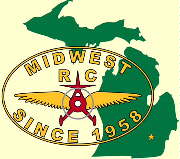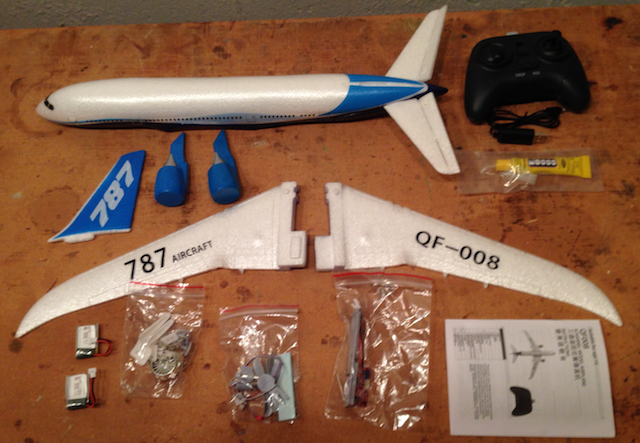 |
The MIDWEST R/C SOCIETY AMA Charter Club 711 Flying Field: Salem Township, MI, USA | ||
By Ken Myers Many modelers find knowing the wing area of a model, in conjunction with the airplane's flying weight in ounces, useful. For the most part, model airplane kits, and some almost ready to fly (ARF) planes, note the wing area in the model's specifications. Most ready to fly (RTF) planes do not note the wing area, as they are counting on the designer to know what to do with that information, and it might add to information overload for beginners, who rely on RTFs. Sometimes, even ARFs do not provide that information. If the basic wing planform is a rectangle or rectangle with trapezoids, the wing area can be quite easily calculated from some simple measurements on the plans or physical wing and the use of some simple math formulas.  The wing area for oddly shaped wings, such as on the QIFENG QF008 787 that Ken used for demonstration, can be calculated fairly easily. A medium such as foam board, or even plain printer paper for larger planes, can be used in conjunction with a scale that can measure in grams. Ken showed his scientific triple beam balance scale that can measure to the closest gram, but that is not really necessary, since we really want more of a rough idea of the wing area than precisely to the square half inch or so. I'm going to use foam board as a reference, but as Ken noted during the presentation, printer paper laid out and butting together will work for large wings. Select or create a piece of foam board that the entire physical wing will fit onto. Measure and weigh that piece of foam board. Ken's original was 24" by 10" for 240 sq.in. of surface area. It weighed 44.4 grams. The 787 wing was laid on the 24" by 10" piece of foam board and traced around with a pencil. The wing planform was cut from the foam board and the wing plan form weighed. It weighed 9.3 grams. The math: 44.4g / 240 sq.in. = 0.185 g/sq.in.
The unit for wing area is square feet, not square inches. 50.3 sq.in. / 144 sq.in. (a square foot) = 0.3493056 or 0.35 sq.ft.
Most fliers have somewhat of a grasp on typical wing loadings expressed in ounces per square foot. As a reminder for those who use, or want to use WCL, as another qualifier to predict a plane's flying characteristics, here is the chart. More information about using wing cube loading (WCL) instead of typical wing loading in predicting flight characteristics can be found here. |